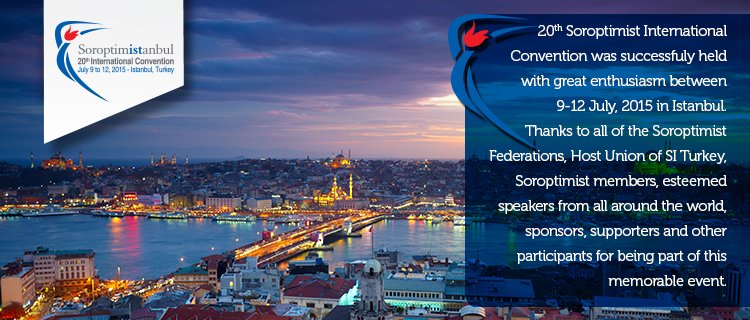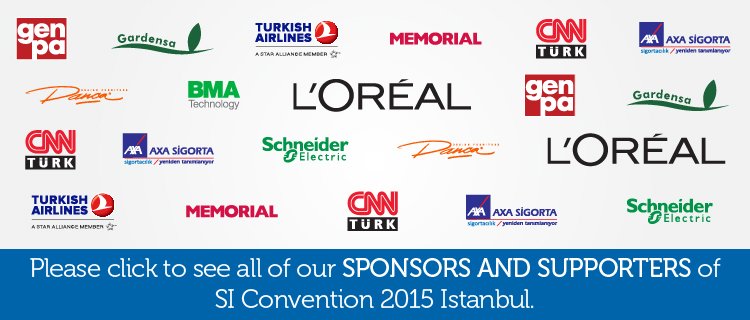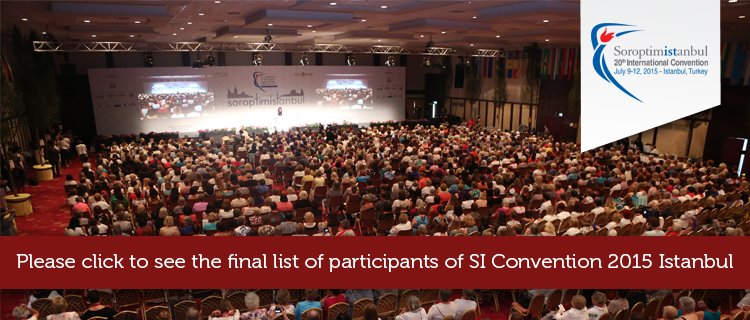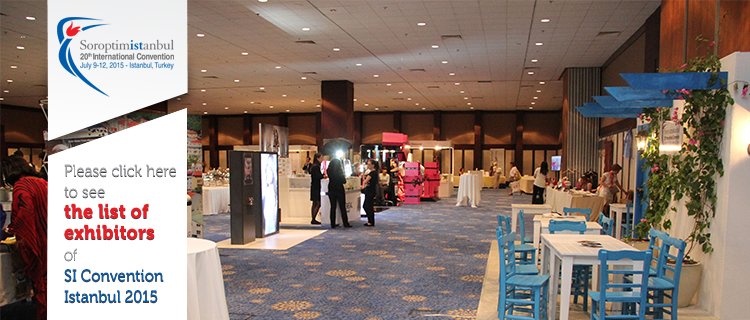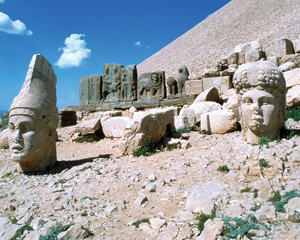July 13th, 2016
LIST OF PARTICIPANTS SPONSORS & SUPPORTERS EXHIBITION COMMITTEES SPEAKERS SOCIAL PROGRAMME OPTIONAL EVENTS PRE & POST TOURS BOARD MEETING ANNOUNCEMENTS PRESS SIGN UP FOR
OUR MAILING LIST SHARINGS BY PARTICIPANTS

INFORMATION
For detailed Convention Factsheet please click here
GENERAL INFORMATION
For detailed Convention Factsheet please click here
CONVENTION DATES:
9 – 12 July 2015
CONVENTION VENUE:
Hilton Istanbul Bosphorus Hotel & Convention Centre, İstanbul
Address: Cumhuriyet Caddesi Harbiye, Istanbul, 34367, Turkey
Web: istanbul.hilton.com
Phone: +90-212-315-6000
CONGRESS LANGUAGE:
English
HOTELS:
There is a wide range of luxury hotels of world class and best price hotel options around the congress venue in Istanbul.
FINANCING OPTIONS:
For participants who suffer from low budget or have a bad credit score we can offer various financing solutions provided by our partner 24CashToday.com - payday loans for bad credit with simple online application.
TRANSPORTATION:
One of the most well-connected international airports in the world. Public transport in Istanbul comprises an extensive bus network, various rail systems, funiculars, taxis and maritime services.
VISA:
Turkey offers many facilities concerning its visa policy. As the rules may often change, it's wise to check regularly http://www.mfa.gov.tr/visa-information-for-foreigners.en.mfa to receive updated information.
Information on countries eligible for visa and information on the possibility of e-visa can be obtained using the above link.
CURRENCY & CREDIT CARDS:
Turkish currency is the Turkish Lira, TL.
Major credit cards including American Express, Diners, MasterCard and Visa are accepted in large hotels, car rental companies and major stores.
LOCAL TIME
GMT+2 (GMT = Greenwich Mean Time)
DRESS CODE
Friendship Evening
Smart Casual or Traditional/National Costume.
Convention Dinner
Formal Evening Dress/Suit.
ABOUT TURKEY

TURKEY has been called "the cradle of civilization" and one can discover what this literally means only by traveling in this land of history. The world's first town, a neolithic city at Çatalhöyük, dates back to 6500 BC. From the days of Çatalhöyük up to the present time Turkey boasts of a rich culture that through the centuries has left a lasting foot-print on modern civilization.
Being the heir of many centuries of culture makes Turkey a paradise of knowledge and cultural heritage. Hattis, Hittites, Phrygians, Urartians, Lycians, Ionians, Persians,Macedonians, Romans, Byzantines, Seljuks and Ottomans have all occupied crucial places in the historical background of Turkey and ancient sites and ruins scattered throughout the country give proof to each civilization's unique distinction.
There is no doubt that one visit will not be enough, and you will want to come back again and again as you discover one extraordinary place after another. All of them, no matter how different, have one thing Turkey is a paradise of sun, sea, mountains and lakes that offers the vacationer a complete change from the stress and routine of everyday life. From April to October, most places in Turkey have an ideal climate that is perfect for relaxing on sandy beaches or enjoying the tranquility of mountains and lakes.
LANGUAGE
Turkish is the official language, but English is widely understood in the main tourist areas.
GETTING AROUND
The best way to travel in and around the Turkish coastal resorts is by the local minibus services which can be hailed from the roadside. There are good bus services between the major towns and organised tours to many attractions, though more independent travellers often prefer to rent a car.
CLIMATE
Avarage highest temperature in day time in July is 27 °C / 77 F, avarage lowest temperature at night in July is 18 °C / 69 F, avarage temperature in July is 22 °C / 72 F. Generally weather is sunny in July. It is advised for the guests who want to have a tour in Istanbul to take their sunglasses and hats.
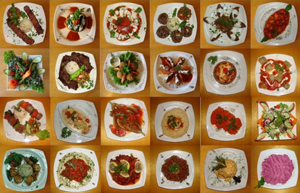
TURKISH CUISINE
Turkish food is famous throughout the world, the range is enormous, from a number of soups to an astonishing variety of meze (appetisers), followed by meat and fish dishes, many famous Turkish sweets and pastries and Turkish coffee. The traditional breakfast is a scrumptious combination of tastes comprising bread, olives, tomato, cucumber, white cheese, butter, jam/honey, yoghurt, and sweet black tea.
Tea is the main drink in Turkey, served without milk in small bulbous glasses with sugar lumps on the saucer. For a very refreshing long drink try Ayran, a mix of yoghurt, water and salt. There are also the normal soft drinks and a wonderful range of squeezed fruit juices. Among alcoholic drinks are light Turkish beer, excellent wines, and the national drink, raki (an anisette), which clouds when water is added giving it the popular name of 'lion's milk'.
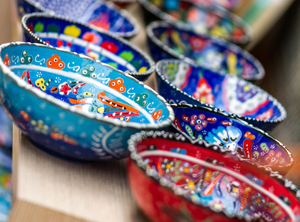
CURRENCY AND CREDIT CARDS
Turkish currency is the Turkish Lira, TL. You will have a bank office near the Conference Center at your service. TL is freely sold and bought in hotels, banks and special exchange offices called "döviz bürosu". Car rental offices, hotels, above average restaurants, shops, travel agencies, gas stations will accept your credit cards. You can get cash with your credit card or cash card by using cash machines (ATM's) in bank buildings or street booths.
ABOUT ISTANBUL
Istanbul is the only city in the world built on two continents. Its fate has been determined by its vital strategic location and enchanting natural beauty. It has long been coveted by powerful empires, and served as capital first to Byzantium and then to the Ottoman Empire.
Istanbul stretches along the two shores of the Bosphorus that links the Sea of Marmara in the South with the Black Sea in the North. It is Turkey's largest city with a population of approximately 12 million.
Istanbul is also at the heart of the economy of Turkey. The largest companies and banks, the main national newspapers, television networks and advertising agencies all have their headquarters in this city.
Istanbul is also the capital of art and culture with a rich tradition in opera and ballet, theatres performing Turkish and foreign plays, concerts, art exhibitions, festivals, auctions, conferences and of course unique museums. The city also boasts the country's largest and finest universities. As an imperial capital for 1500 years, Istanbul has acquired a highly original personality. At every turn in the city you are faced with Roman, Byzantine and Ottoman palaces, mosques, churches, monasteries, monuments, walls and ruins. Yet Istanbul is not a city living only in the past. It is a vibrant, modern and future-oriented metropolis. Bazaars and ultramodern supermarkets and department stores, street vendors and stock-brokers, old crumbling buildings and skyscrapers, horse-drawn carts and sumptuous limousines coexist and this amalgam gives the city a multi-faceted outlook and flavor. Istanbul is like an intricately woven carpet, a subtle blend of eastern and western cultures.

Hagia Sophia is a unique architectural monument being a former patriarchal basilica, later a mosque and now a museum. For nearly thousand years, it is the largest enclosed space in the world and has been a place of attraction by the sheer spectacle of its size, architecture, mosaics and art.
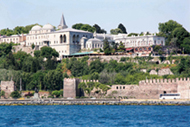
The palace was a setting for state occasions and royal entertainments and is a major tourist attraction today, containing the most holy relics of the Muslim world such as the prophet Muhammed's cloak and sword. A UNESCO World Heritage Site as "the best example[s] of ensembles of palaces of the Ottoman period."
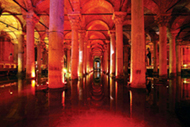
The cistern was built by the Byzantine Emperor Justinian in A.D. 542 on the other side of the Hippodrome to meet the Great Palace water requirements. Nowadays, it is a museum and an exhibition hall, as well as hosting concerts and poetry readings.
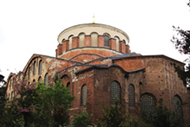
Hagia Eirene ranks as the first church built in Istanbul. It reputedly stands on the site of a pre-Christian temple. As for today, it is a concert hall located in the outer courtyard of Topkapı Palace. It is open as a museum every day except Monday but requires special permission for admission.
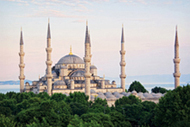
The mosque is popularly known as the Blue Mosque for the blue tiles adorning the walls of its interior. It was built between 1609 and 1616, during the rule of Ahmed I. Like many other mosques, it also comprises a tomb of the founder, a madrasah and a hospice. The Sultan Ahmed Mosque has become one of the most popular tourist attractions in Istanbul.

Built in the 15th century, the huge bazaar is located in the middle of Istanbul's historical center with its streets lying beneath high domes. This is the marketplace of the tale of a thousand and one nights, one of the largest and oldest covered markets in the world, with more than 58 covered streets and over 1,200 shops which attract between 250,000 and 400,000 visitors daily.
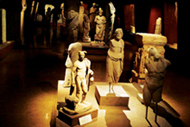
The site of the museums actually belonged to the Topkapı Palace outer gardens. Since the imperial decree protecting cultural goods in the Ottoman empire was enforced, many governors from the different provinces would send in found artefacts to the capital city. In that way the museum was able to amass a great collection. Upon its 100th anniversary in 1991, the Museum received the European Council Museum Award.

This museum contains one of the most important collections of Turkish and Islamic art in the world. Specific items on display are funeral belts, bejeweled objects such as candlesticks decorated with valuable gems, pearl reading desks, carved cooper cups, royal crests, clothing belonging to Sultan Yıldırım Beyazıt and Sultan Selim II, carpets from the Caucasus, and intricately carved doors.
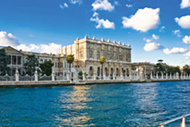
The palace, built by Sultan Abdul-Aziz, between 1863 and 1867. This was a period in which all Ottoman sultans used to build their own palaces rather than using those of their ancestors. Nowadays, used as one of the most popular social events venues of Istanbul.

The Ottoman imperial palace during the 19th century. Mustafa Kemal Atatürk, the founder of the Republic of Turkey, resided there late in his life. The 45,000sqm palace cost a mere five million Ottoman gold pounds, the equivalent of 35 tones of gold— 14 tones of which went into the decoration alone.

At the heart of Istanbul, İstiklal Street is a 24-hours live zone in Istanbul. During daytime, you will meet thousands of persons, doing their business, shopping or just walking around. When the day turns into night, you will again meet thousands of people walking around the street, going to restaurants and night clubs along the street. To experience daily life in Istanbul, İstiklal Street should be visited.

Artists gather every Sunday to exhibit their works in a street gallery. The variety of people creates a lively scene. Sample a tasty morsel from one of the street vendors. There is a church, a mosque and a synagogue that have existed side by side for hundreds of years – a tribute to Turkish tolerance at the grass roots.

Rumelihisarı (Rumelian Castle) is a fortress located in the Sarıyer district of Istanbul, Turkey, on a hill at the European side of the Bosphorus. It was built by the Ottoman Sultan Mehmed II between 1451 and 1452, before he conquered Constantinople. a museum and an open-air theater for various concerts at festivals during the summer months.
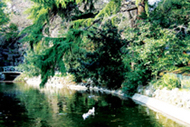
Yıldız Park is a beautiful garden complex with set in a very large park of flowers, plants and trees, gathered from every part of the world dating from the Ottoman era. Park grounds offer panoramic views of the Bosphorus. Two beautiful old pavilions, namely Çadır and Malta pavilions are used to rest...

The museum offers a wide array of services in a multifaceted istanbul, including permanent and temporary exhibition galleries, photography gallery, library, cinema center, cafe and a design store. In addition, the Museum also offers video educational and social programmes.

Pierre Loti Café on Eyüp hillside is a significant residential area with its natural beauties, religious facilities, excellent view of Haliç (Golden Horn). Its calm and relaxed atmosphere makes Pierre Loti Café one of the attractive places in Istanbul. Author Pierre Loti, who admires the Ottoman culture and life style used to visit this café when he was in Istanbul.
TRAVELLING TO ISTANBUL
The most appropriate way to reach Istanbul is by air for participants who will be able to attend from directions mentioned below.
 Turkish Airlines
Turkish Airlines
www.turkishairlines.com
Turkish Airlines is the flag carrier of Turkey, organizes expeditions to 38 domestic and 125 international points with 39 domestic and 127 international airports, totally 166 airports. In all these points, there are sales / station units, agencies and general sales agencies to serve passengers.
More than 3.000 costumers per month reach Turkish Airlines' website via the Star Alliance website, bringing them the benefits of Turkish Airlines' online opportunities.
Istanbul has two international airports, Ataturk International Airport (the main airport- the European Side) and Sabiha Gokcen International Airport (Asian Side).

Ataturk International Airport
www.ataturkairport.com
- 650 - 700 aircraft are handled every day
- Approximately 70.000 passengers are served daily
- In peak periods, these figures rise to 95.000 -100.000 passengers and 900-950 arrivals and departures daily.
- Avoiding the necessity to check-in baggage separately for transfers and is capable of handling 15.000 pieces an hour automatically.
- Two golf cars are currently in service between the Domestic and International Terminals for passenger transfers. The elderly and disabled take priority.

Sabiha Gökçen International Airport
www.sabihagokcen.aero
- Located on the Anatolian shore of Istanbul at Pendik / Kurtkoy.
- At a distance of 40 km to Kadikoy.
- 12 km to Pendik and 50 km to Taksim.
- It has a really convenient traffic in terms of transportation with its 1.5 km connection to the TEM motorway.
TRAVELLING TO ISTANBUL BY TRAIN FROM EUROPE (Sirkeci Station)
The terminal constitutes the main connection node of the Turkish railway network with the rest of Europe. The two main lines of connection are provided by the line running between Istanbul and Thessaloniki, Greece, and the Bosphorus Express serving daily between Sirkeci and Gara de Nord in Bucharest, Romania. Connections to Sofia and Belgrade are established with wagons attached to the Bosphorus Express train.
VISA INFORMATION
Turkey offers many facilities concerning its visa policy. As the rules may often change, it's wise to check regularly http://www.mfa.gov.tr/visa-information-for-foreigners.en.mfa to receive updated information.
Information on countries eligible for visa and information on the possibility of e-visa can be obtained using the above link.
CITY TRANSPORT
AIRPORTS
Istanbul has two airports, the major Atatürk International Airport (IST) near Yeşilköy 23 km (14 miles) west of the city center, reachable by Metro (map); and Sabiha Gökçen Airport (SAW) on the east side of the Bosphorus. Taxis and public transport serve both airports, but a private transfer is often a better way to go.
Private Transfer: Private transfers can be arranged by Convention Organizer. For further information please contact Congress Organizer.
Airport Taxi: A taxi stand is located outside the arrival area, in front of the Terminal Building. Taxi service is provided by the Atatürk Airport Taxi Cooperative. Its drivers are well trained and usually speak foreign languages.
Airport Car Rental: Atatürk Airport is a convenient place to rent a car when you arrive.
Airport Shuttle: A special company named "Havataş" will take you form the airport to the city center, Taksim Area, for a designated price. You can catch the Havataş bus every 30 minutes from the airport. For more information http://www.havatas.com/
CITY BUS
City bus routes get you to some places you'll want to visit. Buy tickets before boarding at kiosks labeled "I.E.T.T" and/or "Bilet" (ticket)
DOLMUŞ MINIBUS
Dolmuş means "filled," which is what the vehicle needs to be before it departs on its customary route. The dolmuş (DOHL-moosh) is Turkey's shared taxi or minibus. You may find them helpful occasionally in Istanbul.
FARES
You can pay be token, multi-use ticketor transit pass for Istanbul's Metro, tram, bus, ferry, train.
FERRYBOAT
Traditional white IDO ferries and private TurYol ferries serve shorter water routes, and are the most enjoyable way to get around Istanbul.
Special daily Touristic Bosphorus Ferries run from the Eminönü ferry docks up the Bosphorus almost to the Black Sea several times daily. Both Sea Bus catamarans and ferryboats travel to the Princes Islands near Istanbul in the Sea of Marmara.
FÜNIKÜLER
The Füniküler (underground funicular) connects Taksim Square and Kabataş on the Bosphorus shore. At Kabataş you can board a ferryboat, sea bus, or the Zeytinburnu tram.
INTERCITY BUS
Istanbul has three intercity bus terminals, the major Istanbul International Bus Terminal (Büyük Otogar) at Bayrampaşa/ Esenler on the western side of the Bosphorus (reachable by Metro), serving the entire country as well as Greece, Bulgaria, the Balkans and Europe. The Emniyet Garajı serves the Balkans.
METRO
Two lines of Istanbul's Metro system are in operation. The most useful for foreign visitors is the light-rail line connecting Atatürk Airport and Aksaray Square via Istanbul's mammoth Otogar (intercity bus station), at which you can board a bus to any part of Turkey or to virtually any country within 1000 miles (1600 km) of Istanbul. Change from the Metro to the tram at Zeytinburnu to reach Old Istanbul and Sultanahmet Square. Also, a standard-gauge Metro line goes north from Taksim Square to the commercial and financial districts.
"SEA BUS" CATAMARAN
Sleek modern passenger catamarans zoom around the city at rush hour, and out to the Princes Islands several times daily. There are even Sea of Marmara routes to Yalova and Bandırma on the sea's southern shore.
SHIPS & CRUISE LINES
Foreign cruise ships and international ferries dock at the Yolcu Salonu in Karaköy at the northern end of the Galata Bridge over the Golden Horn, right in the center of the city, and at Salıpazar just to the northeast.
TAXI
Thousands of yellow taxis, most powered by clean-burning liquified natural gas, throng Istanbul's streets. You'll find them useful and not overly expensive, though the incidence of unpleasantness can be high.
TRAIN STATIONS, INTERCITY
Istanbul has two intercity train stations: Istanbul (Sirkeci) Garı on the Golden Horn, and Haydarpaşa Garı on the Asian shore of the Bosphorus. Take the Zeytinburnu-Kabataş tram to Sirkeci for European trains, or to Eminönü or Karaköy for the ferry to Haydarpaşa.
TRAINS, SUBURBAN
Suburban commuter trains depart Sirkeci Station, trundle around Seraglio Point and continue along the Sea of Marmara shore stopping at the Yenikapı Ferry Terminal (for intercity car and passenger ferries across the Sea of Marmara) and at Yeşilyurt near Atatürk International Airport.
On the Asian shore of the Bosphorus, suburban trains depart Haydarpaşa Station and travel along the northern shore of the Sea of Marmara.
TRAM
You'll find Istanbul's two tram lines useful (map), even though they're as different as can be. Although the nostalgic 19th-century Istiklal Caddesi tram is more fun, the Kabataş-Zeytinburnu tram is the more useful, and can help you travel between the heart of the tourist district at Sultanahmet Square and the Otogar (bus terminal) and/or Atatürk Airport.
TRANSIT PASSES
The old-fashioned jeton (token) is the most common way to pay a fare in Istanbul, though there are also electronic tickets and transit passes for Metro, tram, bus, ferry, train.
TÜNEL
Tünel is Istanbul's two-station underground train connecting Karaköy (Galata) and the southwestern end of Istiklal Caddesi. It's convenient and fun.
WALKING
The best way to get around Old Istanbul's compact medieval core is on foot. Traffic is often so heavy, and traffic patterns so circuitous, that you can often walk somewhere faster than riding.
















